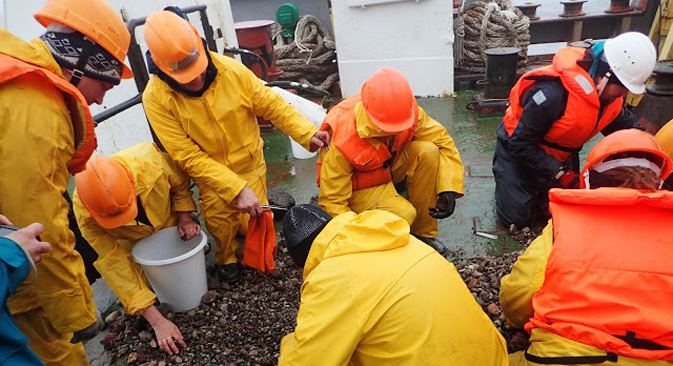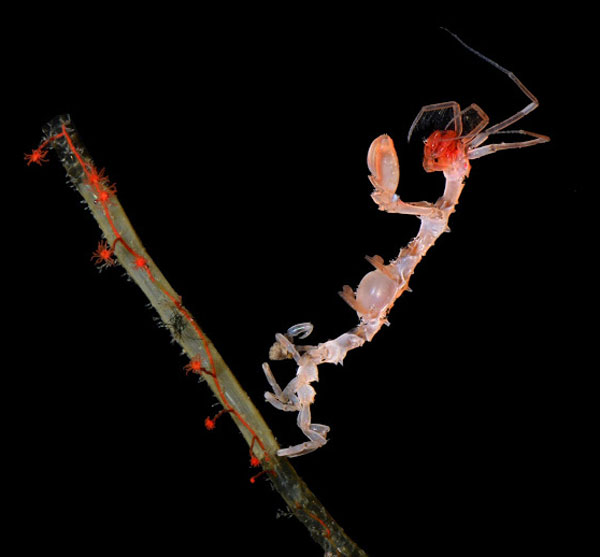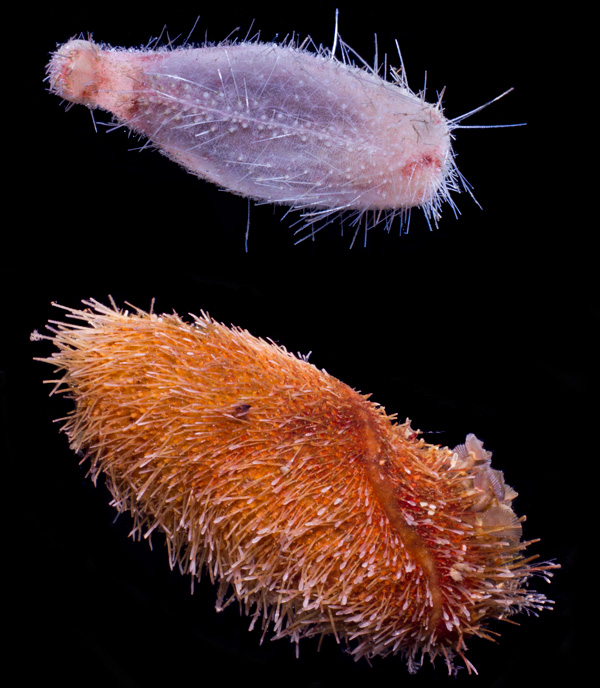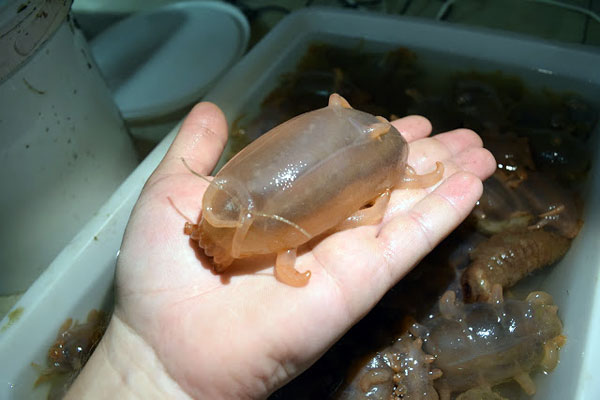The secrets of Russia’s Sea of Okhotsk – nearly 500 species discovered

Scientists also discovered specific iron-manganese formations, which indicates the region has gold and silver deposits.
Fukumori HiroakiScientists previously thought that deep-water life in the Sea of Okhotsk was scant and lacking diversity, and previously they knew of only 50 species in the Kuril Basin. Deputy head of the SokhoBio expedition, Marina Malyutina, told RBTH that they found about 1,000 species there last summer. More than half of them are completely new for scientists. Most are similar to Antarctic and Atlantic deep-water species, and include single-celled organisms, crustaceans, mollusks, echinoderms, various worms, and fish.
Deep-sea surprises
Scientists were surprised by the similarity between species of deep-water fauna in the southeastern part of the Kuril Basin and that of the adjacent Pacific Ocean.
"This is amazing because Pacific Ocean fauna is ancient, evolving in the course of millions of years," explained Malyutina. "The Far Eastern deep-water basins are relatively young and have a complex geological history, with periods of glaciation and complete isolation."
Research was made at a depth of 3,500-6,000 meters, where there is no natural light and the pressure is 750 times higher than in the atmosphere. At these depths, the main inhabitants are a few millimeters in size, and are difficult to catch.
With the help of special equipment on board the Academic Lavrentiev research vessel, scientists made a rich catch, primarily sea organisms that are 1 mm to 10 mm long, as well as less than 1 mm. They also found larger creatures, including fish, that are more than 1 centimeter in length.
"We were very impressed by the number of species at the deepest levels," said Angelika Brandt, professor of the Hamburg Zoological Museum and director of the German scientific group.
"This was not expected, and in terms of the new species there were many interesting finds. For example, we found the deepest nemertean, or ribbon worms, ever reported, Cephalothrix iwatai."
 This curved ghost shrimp is firmly sitting on a branch to catch small passing creatures with its big claws. Source: Anna Lavrenteva
This curved ghost shrimp is firmly sitting on a branch to catch small passing creatures with its big claws. Source: Anna Lavrenteva
Scientists also came upon unknown genera and even a new family of creatures. The species still need to be studied at Russian, German and Japanese institutes, and scientists believe it may take years to give proper classification to the newly-discovered creatures. The first results of the study should be published in two years.
A treasure trove of anti-tumor drugs and gold?
In the future, researchers plan to isolate and extract certain natural substances from the collected specimens that could possibly be used to make medicines. Today, the Institute of Bio-organic Chemistry in Vladivostok prepares anti-inflammatory and anti-tumor drugs with biological additives from several sea organisms.
 Deep-water sea urchins surprised biologists with their unusual form and fragility. Source: Kirill Minin
Deep-water sea urchins surprised biologists with their unusual form and fragility. Source: Kirill Minin
Also, during a study of seabed soils near Simushir Island, geologists discovered specific iron-manganese formations, which indicates the region has gold and silver deposits. Scientists, however, will confirm this only after a complete study of the soil specimens.
At great depths we find well-known octopi, starfish and shrimp, as well as many other creatures that captivate us with their bizarre shapes. Source: Anna Lavrenteva
The SokhoBio expedition brought together researchers from the Zhirmunsk Institute of Sea Biology, the Ilichev Pacific Ocean Institute of Oceanology, the Hamburg Zoological Museum, the University of Bremen, the University of Tokyo, and other places.
 The deep-water sea cucumber is nicknamed, "sea pig," due to its similarity to the land animal, even though it’s a close relative of the trepang and the cucumaria. Source: Stefan Eiler
The deep-water sea cucumber is nicknamed, "sea pig," due to its similarity to the land animal, even though it’s a close relative of the trepang and the cucumaria. Source: Stefan Eiler
A fourth joint Russian-German expedition named Kuril-Kamchatka Biodiversity Studies II (KuramBio II) will take place in 2016 on board Germany’s new research ship, Sonne. It will study fauna at the Kuril-Kamchatka trench's maximum depths of 9,500 meters. This is just shy of the world’s deepest point, the Mariana Trench, which is 11,000 meters deep.
Read more: A legendary breed of wild horse returns to Russia>>>
All rights reserved by Rossiyskaya Gazeta.
Subscribe
to our newsletter!
Get the week's best stories straight to your inbox
